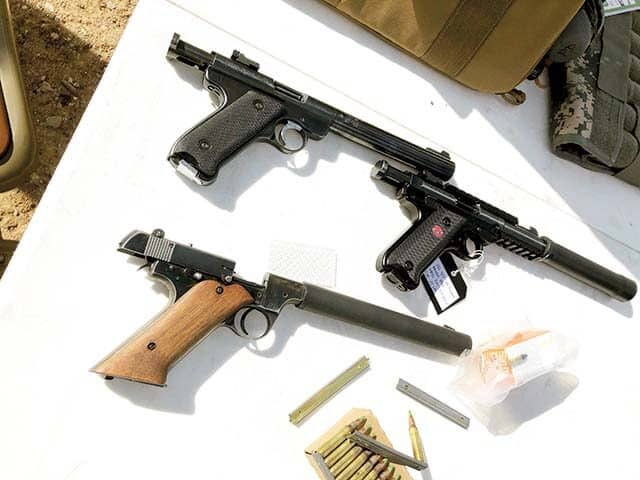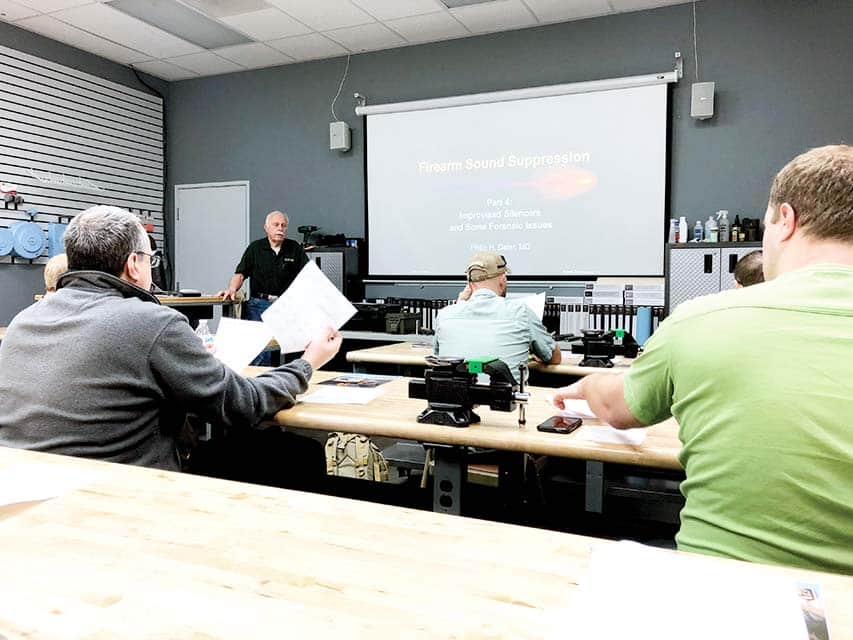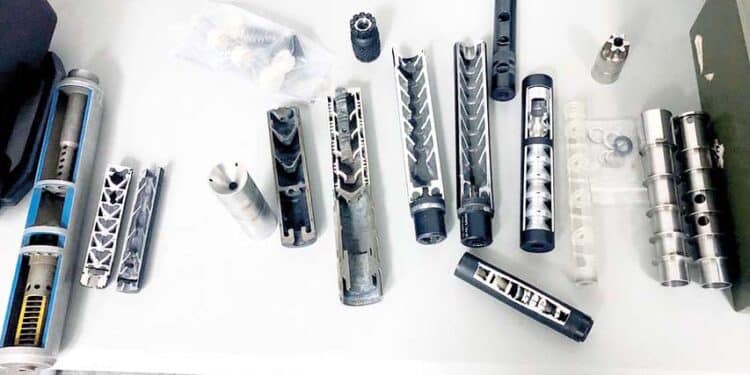There has been a resounding boom in popularity of suppressors in recent years. They have become less the stuff of secret agents and more the stuff of sport shooters, hunters, standard-issue gear for military personnel and law enforcement. Their tactical advantage on the battlefield and practical application in shooting have crossed a threshold. More producers are simply making more quality products at more accessible prices, and this is an undeniably good thing for special operators and weekend plinksters alike.

While there is still some squabbling about proper terminology, mostly used to arrogant-ly put down the less experienced, the article in question is generally referred to by the shooting community as a “sound suppressor.” Silencers obviously do not silence a weapon’s operation, and those who refer to them as such usually get their terminology from Hollywood or the National Firearms Act of 1934. As much as suppressor gurus cringe at the use of the word “silencer,” it is the language used by Federal law, as regulated under Bureau of Alcohol, Tobacco, Firearms and Explosives, and was coined by Hiram Percy Maxim, himself. For this reason, I have never really worried about the terminology and just enjoyed the suppressor/silencer for what it is—a wonderful tool that adds another level of convenience and tactical practicality to the battlefield and the range. With the influx of usage during this suppressor renaissance, training is key for users to properly deploy their suppressor, as it is not like any other accessory.
This author had the pleasure to attend a tier one course operated by Dan Shea of Phoenix Defence. His company is well known to the U.S. Defense community, as well as to NATO and NA-TO-aligned nations. The course was organized as a seminar and was instructed by Dr. Philip H. Dater, MD. “Doc” Dater has over 50 years of experience in firearm suppression, including design and manufacturing. He is also an expert in firearm sound measuring techniques and pioneered the standardization of measuring procedures. Dr. Dater found this passion while filling the hours on-call as an overnight radiologist. In his spare time, he began to tinker with suppressors and successfully reproduced and improved upon existing designs. In the 1970s, he launched the Automatic Weapons Company (AWC) in Albuquerque, New Mexico. By 1994, he had left AWC and started Gemini Technologies (Gemtech) in Idaho with a team of professional designers. A man of many hats, Dr. Dater also created his own private consulting company, Antares Technologies, which works with other defense manufacturers and the U.S. government. His consultancy specialized on firearm and suppression testing with modern sound equipment, high speed photography and other technologies.


The Seminar
The seminar was filled with top tier representatives of a wide spectrum of three letter agencies from around the DC belt-way and government design groups. Apart from tuning up on suppressor deployment, many were conducting research for product procurement and possible contract so-licitation. The seminar instructors included pioneers in modern suppression who offered development workshops, testing procedures, and live-fire testing of many examples. Instructors walked participants through the basic principles of suppression, source of sound, acoustic characteristics, ballistic crack and flash suppression through proper suppressor design with optimal material construction. As a class, participants reviewed proper suppressor maintenance, cleaning and common problems encountered. We discussed, at length, the role of muzzle length and gas pressure, the role of suppressed pistols and recoil management and modern linear inertial decoupler design. These lectures were punctuated with high-speed photography and videos, which transformed more abstract concepts into concrete engineering problems, and ideally, solutions.

Doc also passed on an interesting look into craft-built expedient devices. These lectures were complimented by detailed examples in the history of suppressor de-velopments. He elaborated on advantages and disadvantages of integral and mount-ed suppressors, baffles designs, including K and M baffles, and different construction materials in common use today, which in part, determine durability and service life and affect potential sound reduction. The seminar also addressed the persistent first-round pop problem, which challenges designers to this day. Of particular interest was the dissection of Soviet/Russian sup-pressed systems and specialty, reduced velocity ammunition, such as the 9×39 cartridge and the VSS rifle, and the role of captive piston ammunition.
Lesson Learned
The most valuable lesson from the course was the standardization of sound measuring procedures which Doc helped to develop and which private and government operators and instructors are able to bring back to their respective agencies. This author would highly recommend the seminar to any agency or individual looking to gain insights on next level suppressor deployment and development. Contact Phoenix Defence for the next upcoming advanced suppressor seminar, scheduled for October 3-4, 2019. phoenixdefence.com / 702-208-9735
| This article first appeared in Small Arms Review V23N7 (AUG/SEPT 2019) |












